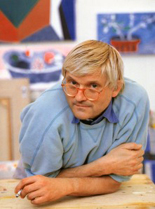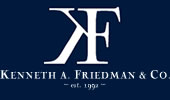|
David Hockney
David Hockney, CH, RA, (born 9 July 1937) is an English painter, draughtsman, printmaker, stage designer and photographer, who is based in Bridlington, Yorkshire, although he also maintains a base in London. An important contributor to the Pop art movement of the 1960s, he is considered one of the most influential British artists of the twentieth century.
Hockney was born in Bradford to Laura and Kenneth Hockney and educated first at Wellington Primary School. After being educated at Wellington Primary School, he then went to Bradford Grammar School, Bradford College of Art and the Royal College of Art in London, where he met R. B. Kitaj. While still a student at the Royal College of Art, Hockney was featured in the exhibition Young Contemporaries-alongside Peter Blake-that announced the arrival of British Pop Art. He became associated with the movement, but his early works also display expressionist elements, not dissimilar to certain works by Francis Bacon. Sometimes, as in We Two Boys Together Clinging (1961), named after a poem by Walt Whitman, these works make reference to his love for men. From 1963, Hockney was represented by the influential art dealer John Kasmin. In 1963 Hockney visited New York, making contact with Andy Warhol. A later visit to California, where he lived for many years, inspired Hockney to make a series of paintings of swimming pools in Los Angeles, using the comparatively new Acrylic medium and rendered in a highly realistic style using vibrant colours. In 1967, his painting, Peter Getting Out Of Nick's Pool, won the John Moores Painting Prize at the Walker Art Gallery in Liverpool. He also made prints, portraits of friends, and stage designs for the Royal Court Theatre, Glyndebourne, La Scala and the Metropolitan Opera in New York City.
Hockney's older sister, Margaret, who also lives in Yorkshire, is an artist of still life photos.
The "joiners":
David Hockney has also worked with photography, or, more precisely, photocollage. Using varying numbers of small Polaroid snaps or photolab-prints of a single subject Hockney arranged a patchwork to make a composite image. One of his first photomontages was of his mother. Because these photographs are taken from different perspectives and at slightly different times, the result is work that has an affinity with Cubism, which was one of Hockney's major aims-discussing the way human vision works. Some of these pieces are landscapes such as Pearblossom Highway #2, others being portraits, e.g. Kasmin 1982, and My Mother, Bolton Abbey, 1982.
These photomontage works appeared mostly between 1970 and 1986. He referred to them as "joiners". He began this style of art by taking Polaroid photographs of one subject and arranging them into a grid layout. The subject would actually move while being photographed so that the piece would show the movements of the subject seen from the photographer's perspective. In later works Hockney changed his technique and moved the camera around the subject instead.
Hockney's creation of the "joiners" occurred accidentally. He noticed in the late sixties that photographers were using cameras with wide-angle lenses to take pictures. He did not like such photographs because they always came out somewhat distorted. He was working on a painting of a living room and terrace in Los Angeles. He took Polaroid shots of the living room and glued them together, not intending for them to be a composition on their own. Upon looking at the final composition, he realized it created a narrative, as if the viewer was moving through the room. He began to work more and more with photography after this discovery and even stopped painting for a period of time to exclusively pursue this new style of photography. Frustrated with the limitations of photography and its 'one eyed' approach, he later returned to painting.
Later works:
In 1974, Hockney was the subject of Jack Hazan's film, A Bigger Splash (named after one of Hockney's swimming pool paintings from 1967).
In 1977 David Hockney authored a book of etchings called The Blue Guitar: Etchings By David Hockney Who Was Inspired By Wallace Stevens Who Was Inspired By Pablo Picasso. The etchings were inspired by and represented the themes of Stevens' poem, "The Man With The Blue Guitar", which accompanied the art. It was published as a portfolio and as a book in spring 1997 by Petersburg Press.
Hockney was commissioned to design the cover and a series of pages for the December 1985 issue of the French edition of Vogue. Consistent with his interest in cubism and admiration for Pablo Picasso, Hockney chose to paint Celia Birtwell (who appears in several of his works) from different views, as if the eye had scanned her face diagonally.
In December 1985, Hockney was commissioned to draw with the Quantel Paintbox, a computer program that allowed the artist to sketch directly onto the screen. Using this program was similar to drawing on the PET film for prints, with which he'd had much experience. The resulting work was featured in a BBC series profiling a number of artists.
His A Bigger Grand Canyon, a series of 60 paintings that combined to produce one enormous picture, was bought by the National Gallery of Australia for $4.6 million.
On 21 June 2006, his painting of The Splash fetched 2.6 million GBP - a record for a Hockney painting.
In October 2006 the National Portrait Gallery in London organized one of the largest ever displays of Hockney's portraiture work, including 150 of his paintings, drawings, prints, sketchbooks and photocollages from over five decades. The collection ranged from his earliest self-portraits to work completed in 2005. Hockney himself assisted in displaying the works, and the exhibition, which ran until January 2007, proved to be one of the most successful in the gallery's history.
In June 2007, Hockney's largest painting, Bigger Trees Near Warter, which measures 15x40', was hung in the Royal Academy's largest gallery in their annual Summer Exhibition. This work "is a monumental-scale view of a coppice in Hockney's native Yorkshire, between Bridlington and York. It was painted on 50 individual canvases, mostly working in situ, over five weeks last winter." In 2008, he donated this work to the Tate Gallery in London, saying: "I thought if I'm going to give something to the Tate I want to give them something really good. It's going to be here for a while. I don't want to give things I'm not too proud of...I thought this was a good painting because it's of England...it seems like a good thing to do".
Since 2009, Hockney has painted hundreds of portraits, still lifes and landscapes using the Brushes.
iPhone and iPad application, often sending them to his friends. His show (these works discussed above) Fleurs fraiches (Fresh Flowers) is just closed at La Fondation Pierre Berge in Paris.
Many of Hockney's works are now housed in a converted industrial building called Salts Mill, (in Saltaire), near his home town of Bradford.
Public life:
A conscientious objector, Hockney worked as a medical orderly in hospitals as his National Service 1957-59.
He was made a Companion of Honour in 1997 and is also a Royal Academician.
Hockney was offered a knighthood in 1990, but he declined the offer.
Hockney serves on the advisory board of the political magazine Standpoint, and contributed original sketches for its launch edition, in June 2008.
He is a staunch pro-tobacco campaigner and was invited to guest-edit the Today programme on 29 December 2009 to air his views on the subject.
In October 2010 he and 100 other leading artists signed an open letter to the Culture Minister Jeremy Hunt protesting against cutbacks in the arts.
Courtesy Wikipedia |


